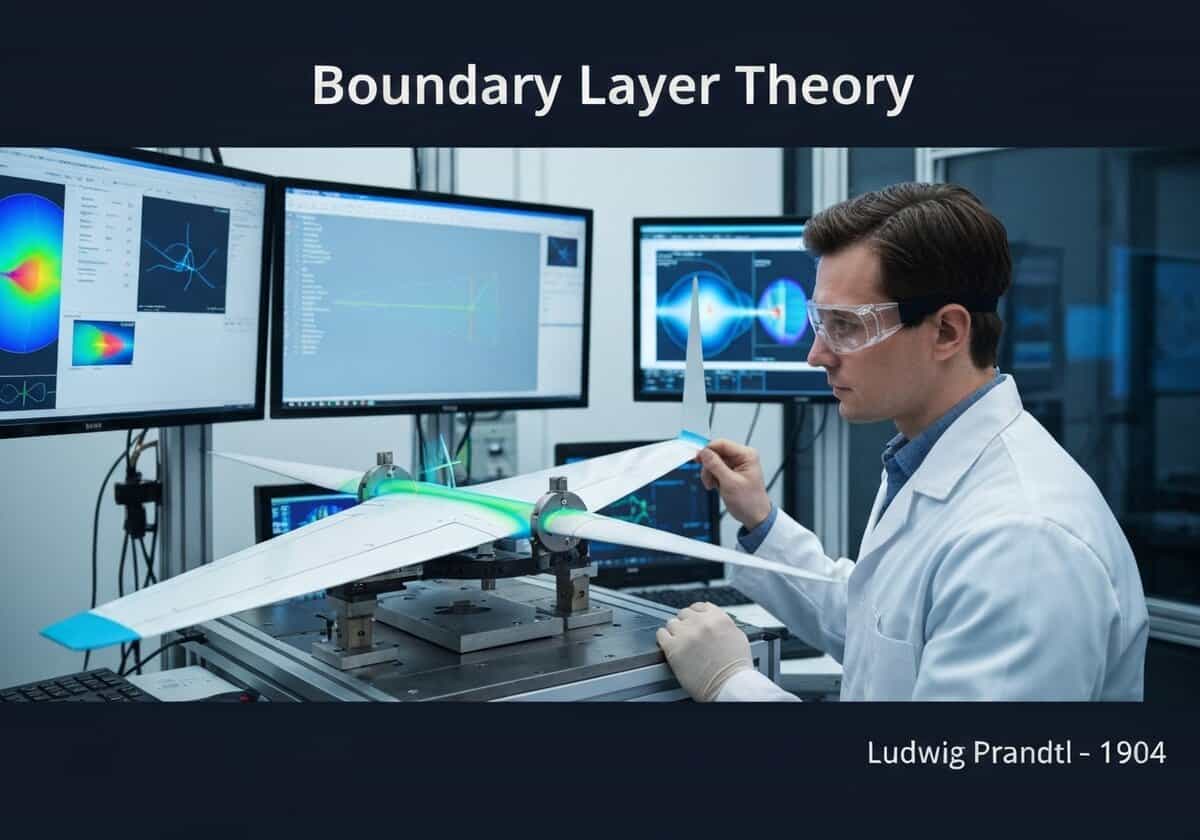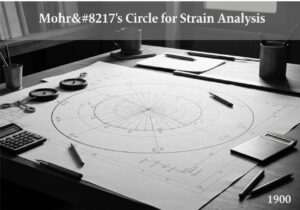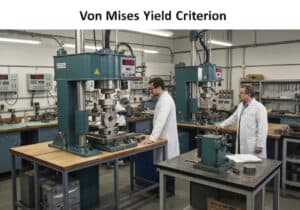The boundary layer is the thin layer of fluid in the immediate vicinity of a bounding surface where the effects of viscosité are significant. Introduced by Ludwig Prandtl, this concept simplifies fluid dynamics problems by dividing the flow into two regions: the thin boundary layer where viscosity dominates and the outer region where inviscid flow theory can be applied.
Théorie de la couche limite (fluides)
- Ludwig Prandtl

Ludwig Prandtl’s boundary layer theory was a monumental breakthrough that reconciled theoretical fluid dynamics with experimental results. Before 1904, theory based on inviscid flow (like d’Alembert’s paradox) incorrectly predicted zero drag for objects moving through a fluid, a clear contradiction of reality. Prandtl proposed that the effects of fluid friction (viscosity), while negligible in the bulk of the flow, are critically important in a very thin layer adjacent to the object’s surface. This is the boundary layer.
Within this layer, the fluid velocity changes from zero at the surface (the no-slip condition) to the free-stream velocity at the edge of the layer. This velocity gradient creates shear stress, which is the source of skin friction drag, one of the two main components of aerodynamic drag. The behavior of the boundary layer is crucial. It can be either smooth and orderly (laminar) or chaotic and irregular (turbulent). A turbulent boundary layer has more energy and is more resistant to separating from the surface, but it also creates significantly more skin friction drag. Flow separation, where the boundary layer detaches from the surface, often occurs due to an adverse pressure gradient and leads to a massive increase in pressure drag, which is the other main drag component. Understanding and controlling the boundary layer is a central goal of aerodynamic design.
Taper
Perturbation
Usage
Précurseurs
- Équations de Navier-Stokes décrivant l'écoulement visqueux
- D’Alembert’s paradox, which highlighted the discrepancy between inviscid theory and reality
- Observations expérimentales de la résistance et de la traînée des fluides
Applications
- conception de carrosseries profilées comme des ailes d'avion et des carrosseries de voiture pour réduire la traînée
- analyse du transfert de chaleur dans le refroidissement des moteurs et de l'électronique
- comprendre et contrôler la séparation des flux
- conception des aubes de turbines et de compresseurs
- development of ‘shark skin’ surfaces for drag reduction
Brevets:
Idées d'innovations potentielles
!niveaux !!! Adhésion obligatoire
Vous devez être membre de l'association pour accéder à ce contenu.
DISPONIBLE POUR DE NOUVEAUX DÉFIS
Ingénieur mécanique, chef de projet, ingénierie des procédés ou R&D
Disponible pour un nouveau défi dans un court délai.
Contactez-moi sur LinkedIn
Intégration électronique métal-plastique, Conception à coût réduit, BPF, Ergonomie, Appareils et consommables de volume moyen à élevé, Production allégée, Secteurs réglementés, CE et FDA, CAO, Solidworks, Lean Sigma Black Belt, ISO 13485 médical
Nous recherchons un nouveau sponsor
Votre entreprise ou institution est dans le domaine de la technique, de la science ou de la recherche ?
> envoyez-nous un message <
Recevez tous les nouveaux articles
Gratuit, pas de spam, email non distribué ni revendu
ou vous pouvez obtenir votre adhésion complète - gratuitement - pour accéder à tout le contenu restreint >ici<
Contexte historique
Théorie de la couche limite (fluides)
(si la date est inconnue ou non pertinente, par exemple « mécanique des fluides », une estimation arrondie de son émergence notable est fournie)
Inventions, innovations et principes techniques connexes

























